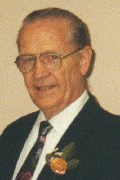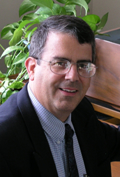Piano Technicians Guild
WESTPAC - Western and Pacific Regional Conference
March 7-10, 2013
Hyatt Regency Downtown, Phoenix, AZ
Tuning Classes
NOTE: Click on an instructor's name to see a bio.
Passing the PTG Tuning Exam Using the C# Temperament
and Octave Stretches
The Coleman C# Temperament will be demonstrated along with moderate octave stretching. Various interval tests (previously written up by LaRoy Edwards, William Stonaker, and Rick Baldassin) will be used. Treble octaves will be demonstrated using Major 3rd-Major 10th tests. Several tests will be used in the treble and bass.
The Sound of Your Tuning
An overview of tuning style and sound, with discussion on how the piano tone is affected by temperament types, octave stretch, and stability. The interaction of octave tuning on temperament sound and overall piano tone is demonstrated and discussed in depth. Octave tuning styles are demonstrated and explained with both aural and electronic verification, along with a practical aural approach to stretching the octaves, fitting the tuning to the piano, and applying your individual style to the piano tuning.
Six Things You Need to Know to Tune a Temperament
Perhaps one of the reasons some have trouble learning temperament tuning is because it is made out to be so hard. It’s not as complicated as we sometimes make it seem. There are only six things you need to know, and be able to do, in order to tune a temperament. So let’s go back to the basics – and get on with it.
 Jim
Coleman is a second generation piano technician. He graduated from ASU with
a Bachelor degree in Music Education (1950) and Band, Orchestra, and Chorus
Music. He helped form the PTG Phoenix Chapter in 1960. He taught his first
class at the 1961 National Convention and continued to teach for many decades.
He and Dr. Sanderson developed the PTG Tuning Exam. Jim received the Member
of Note award in 1978, Hall of Fame in 1990, and the Golden Hammer Award in
1996.
Jim
Coleman is a second generation piano technician. He graduated from ASU with
a Bachelor degree in Music Education (1950) and Band, Orchestra, and Chorus
Music. He helped form the PTG Phoenix Chapter in 1960. He taught his first
class at the 1961 National Convention and continued to teach for many decades.
He and Dr. Sanderson developed the PTG Tuning Exam. Jim received the Member
of Note award in 1978, Hall of Fame in 1990, and the Golden Hammer Award in
1996.  Don
Mannino, RPT, began an apprenticeship with a piano rebuilder while completing
his studies at San Diego State University as a piano performance major in 1979.
After working as an independent piano technician in the San Diego area, he
held the position of National Service Manager for Young Chang Pianos, then
was Manager of Technical Support for Kawai Pianos in the US and Canada, and
now serves as the Director of Technical Training for Kawai and Shigeru Kawai
Pianos. Don and his wife Patty are the editors of the Southern California Combined
PTG newsletter. In addition to teaching at regional technician seminars, PTG
Annual conventions, and at PTG chapter meetings, he also has designed technicians
tools and has had articles on a variety of technical topics published in the
Piano Technicians Journal, including Action Center service, a series on grand
action regulation, and the use of plastics in piano actions. In 2010 he was
certified in Japan as a Kawai "Master Piano Artisan" (or MPA), the
highest level of technician for the Kawai company. Don resides in Cypress, CA with his wife
Patty. Their daughter Sarah is studying Aerospace Engineering at UCSD.
Don
Mannino, RPT, began an apprenticeship with a piano rebuilder while completing
his studies at San Diego State University as a piano performance major in 1979.
After working as an independent piano technician in the San Diego area, he
held the position of National Service Manager for Young Chang Pianos, then
was Manager of Technical Support for Kawai Pianos in the US and Canada, and
now serves as the Director of Technical Training for Kawai and Shigeru Kawai
Pianos. Don and his wife Patty are the editors of the Southern California Combined
PTG newsletter. In addition to teaching at regional technician seminars, PTG
Annual conventions, and at PTG chapter meetings, he also has designed technicians
tools and has had articles on a variety of technical topics published in the
Piano Technicians Journal, including Action Center service, a series on grand
action regulation, and the use of plastics in piano actions. In 2010 he was
certified in Japan as a Kawai "Master Piano Artisan" (or MPA), the
highest level of technician for the Kawai company. Don resides in Cypress, CA with his wife
Patty. Their daughter Sarah is studying Aerospace Engineering at UCSD. Randy
is the founder and director of the Randy Potter School of Piano Technology
which has become the largest producer of training materials for piano technicians
in the world. Randy has written three books, and he is the editor of The Piano
Action Handbook, third edition, published by the Piano Technicians Guild. He
has produced numerous technical articles and over a dozen technical training
video tapes. Randy is a frequent instructor at local, state, regional and national
PTG conventions, and has taught at seminars in the U.S., Canada, Europe, Asia
and Cuba. Randy is the 2009 recipient of the Piano Technicians Guild Hall of
Fame award in recognition of service to PTG and the industry.
Randy
is the founder and director of the Randy Potter School of Piano Technology
which has become the largest producer of training materials for piano technicians
in the world. Randy has written three books, and he is the editor of The Piano
Action Handbook, third edition, published by the Piano Technicians Guild. He
has produced numerous technical articles and over a dozen technical training
video tapes. Randy is a frequent instructor at local, state, regional and national
PTG conventions, and has taught at seminars in the U.S., Canada, Europe, Asia
and Cuba. Randy is the 2009 recipient of the Piano Technicians Guild Hall of
Fame award in recognition of service to PTG and the industry.